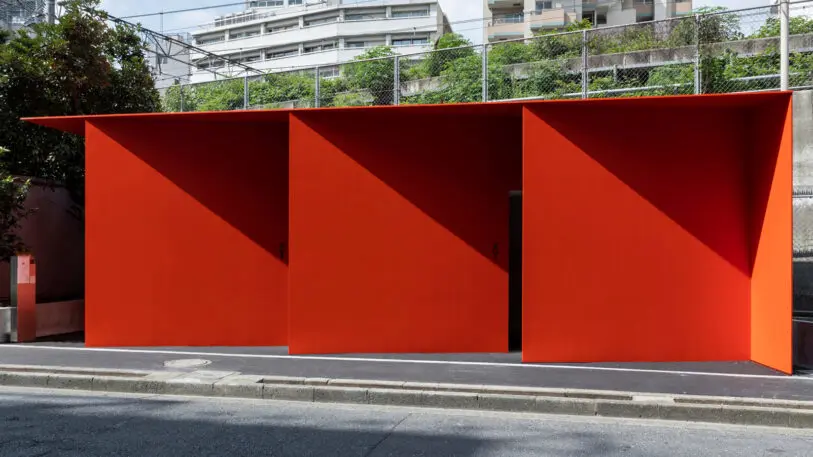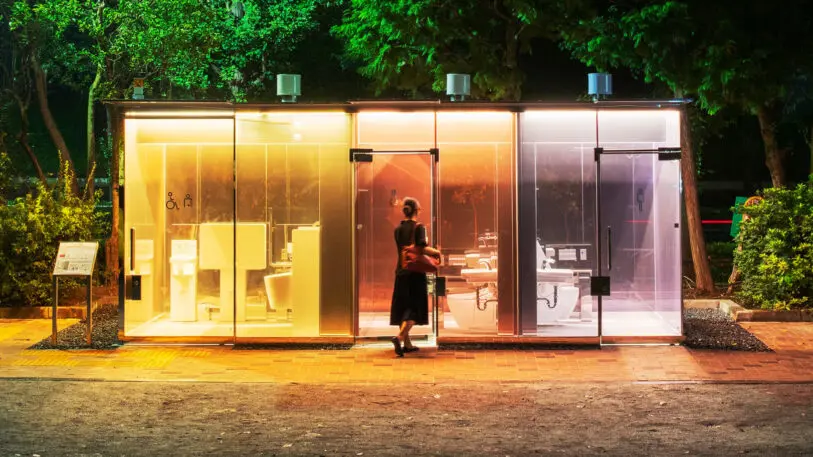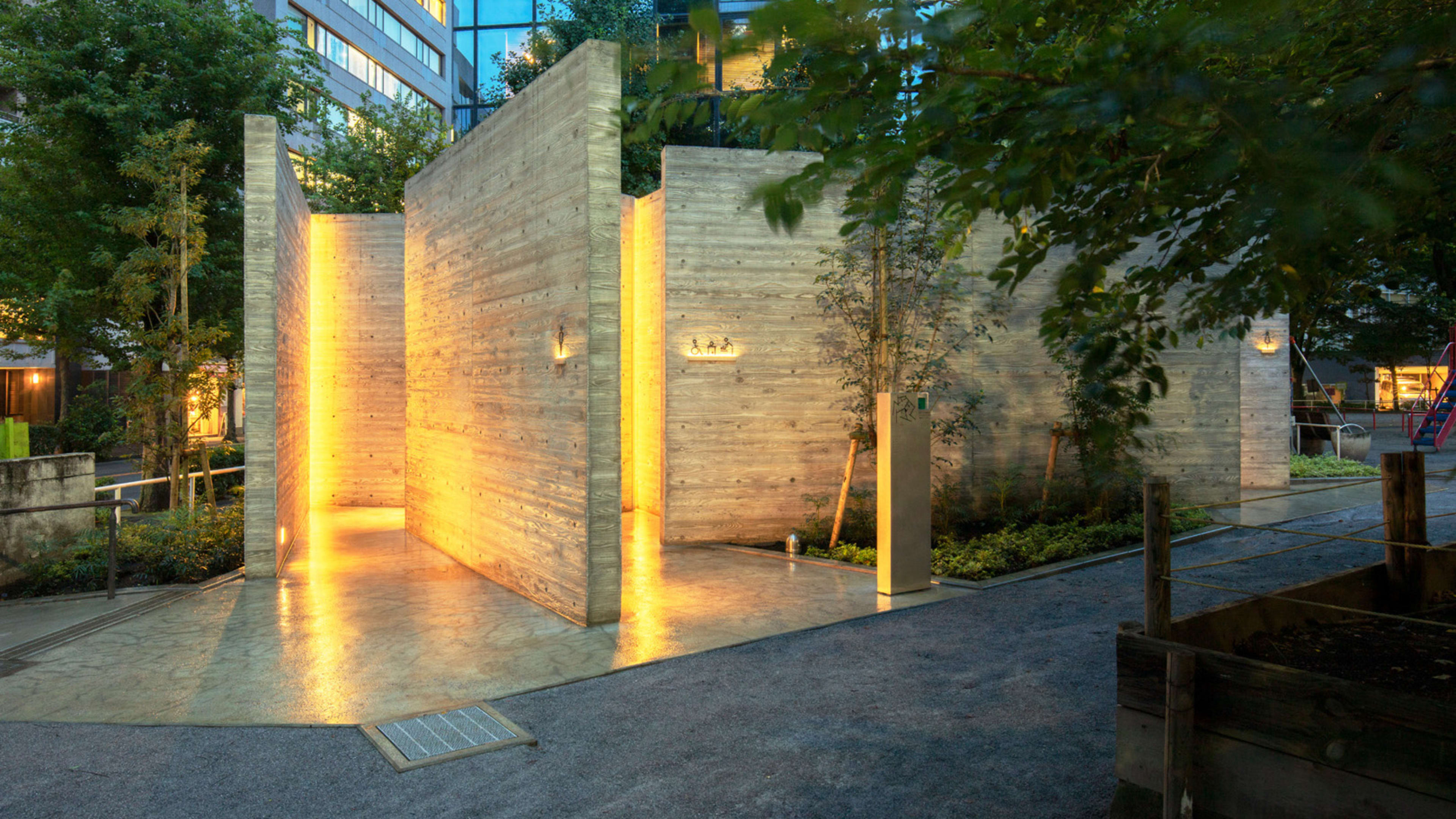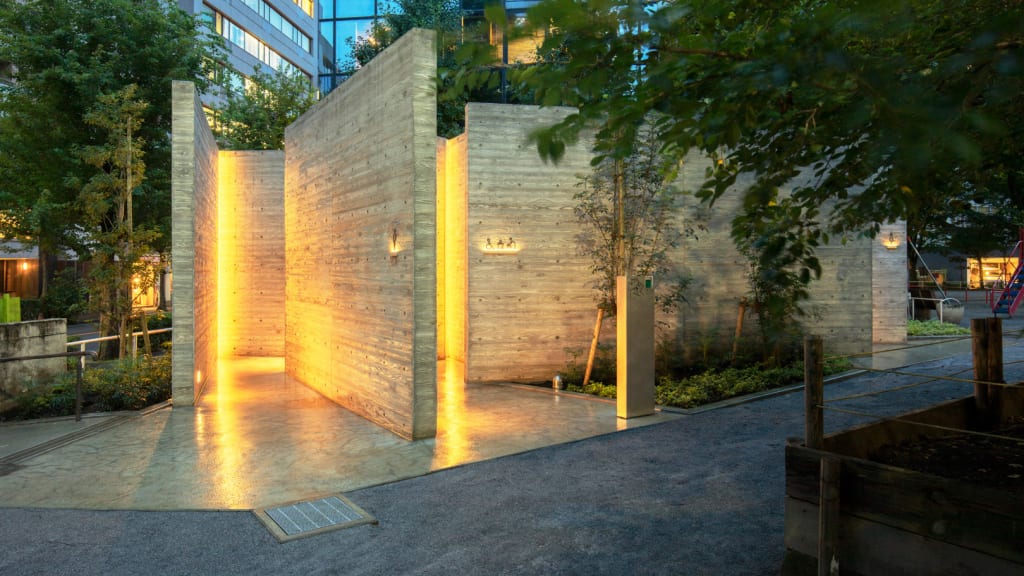During the pandemic, many people have felt their urinary leashes grow tighter.
The urinary leash—a sociological euphemism for the distance one can venture from their home before returning because they have to use the toilet—has been cut for many people by the closures and lockdowns of the pandemic. For parents and people with inflammatory bowel issues like Crohn’s disease, access to bathrooms when out in the world is a requirement, but many urban go-to bathroom options like cafes and libraries are currently closed.
Here is where the humble public bathroom saves the day. But as noted by writers such as Lezlie Lowe, author of No Place To Go: How Public Toilets Fail Our Private Needs, cities have hardly enough places for people to pee. Even when public toilets are available in cities—and many cities such as New York, Sydney, and Paris do have extensive offerings—they’re often under-maintained, potentially dangerous, or inexplicably locked.

To address this natural human need with style, the Nippon Foundation in Japan launched the Tokyo Toilet project, which aims to add more than a dozen new public restrooms in one of the busiest centers of the city. To do so, they’ve commissioned designs from some of Japan’s most well-known architects and other designers from around the world, including Tadao Ando, Shigeru Ban, Kengo Kuma, and Marc Newson. The restrooms are planned for 17 locations throughout Shibuya City, a commercial subsection of greater Tokyo famous for the tidal rush of pedestrians at its main intersection.
Japan’s reputation as one of the cleanest countries in the world doesn’t extend into its public restrooms, according to the Nippon Foundation, a nonprofit that focuses on humanitarian needs and disaster relief. “The use of public toilets in Japan is limited because of stereotypes that they are dark, dirty, smelly, and scary,” Mihoko Ueki, project coordinator from the Nippon Foundation, tells Fast Company in an email. The foundation argues “that the power of creative design is the key to overcome such challenges.”
For an undisclosed amount of funding and in partnership with toilet maker Toto and prefabricated housing builder Daiwa House, the foundation called on designers to create world-class toilet facilities. Five of the restrooms have opened over the past few weeks.

On the edge of the large Yoyogi Park, two pastel glass bathrooms have been designed by Pritzker Prize-winning architect Shigeru Ban. Transparent when not in use, the bathrooms use a type of exterior glass that turns opaque when its doors are locked. Lit at night, the bathrooms become candy-colored lanterns.

The other three operating bathrooms are located near the busy Ebisu train station, where several lines stop. One, designed by New York-based designer Nao Tamura, is tucked on a narrow triangle of land between the train line and a road, and jumps out from the concrete in bright red monochrome. Another, by interior designer Masamichi Katayama of the firm Wonderwall, embraces concrete, intersecting 15 tall plain walls to create clearly separate entrances into the bathroom’s three spaces.
Architect Fumihiko Maki, another Pritzker Prize winner, used a swooping white roof and frosted glass to create a vaguely oceanic structure for a small neighborhood park. An octopus-shaped slide within the park was inspiration for the design, and Maki hopes the bathroom becomes known as the “squid toilet.”
Most of the rest of the public toilets are scheduled to open sometime in 2021, but two others, designed by Takenosuke Sakakura and Tadao Ando, will be ready for use in the coming weeks. And to make sure these sparkling new bathrooms don’t devolve into the realm of dark, dirty, smelly, and scary, the project has partnered with the local government and tourism agency to keep them clean.
Though the project is only focused on one part of one city, it may serve as a beautiful template for how cities can do more to help let us all off our urinary leashes.
Recognize your brand’s excellence by applying to this year’s Brands That Matter Awards before the early-rate deadline, May 3.





